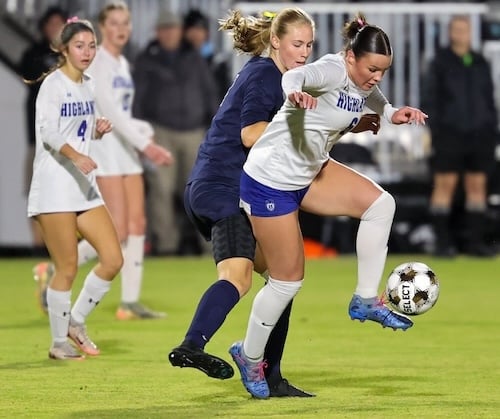By Howard Whiteman
Murray State University
The two photos on the screen spoke volumes, but the presenter and some in the audience interpreted them very differently. Both photos showed the understory of a forest, which are the plants growing in the shade of mature trees.
One had few plants, and the other had abundant shrubs. Many in the audience were thinking that the second photo was perfect habitat for songbirds, small mammals, insects, and other species, and how important a thick, vibrant understory can be for forest health. The presenter, however, was focused on one species, the white oak, and from his perspective, the first picture was much better
The second one would be too much competition for white oak to regenerate as quickly as he would like.

What is good for one species is often bad for others. Life, including forest life, is a tradeoff. Industries don’t like tradeoffs, and forestry is an industry. As much as they might tout their interest in healthy forests and wildlife habitat, what the industry wants more than anything is production of harvestable trees. If their management helps some wildlife, or even a few other tree species, it’s icing on the cake. But the cake is profit.
Foresters often focus on growing single tree species just like corn and soybeans. They are even working on modifying the genes of their trees, just as we do for other crops. Like our crops, they use herbicide to reduce the understory that affects growth of the target species, which is bad for native plants as well as the wildlife that feed and live on them. To harvest the trees, they build new roads in the forest, which fragment the habitat and also negatively affects wildlife.
Fisheries are similar. So much money, including revenue from fishing licenses, are used to rear fish in concrete pools at hatcheries, which are then released so people can catch these factory fish. In “put and take” trout fisheries, the fish are reared to legal catch size because many of the places they are placed will be too warm in the summer for them to survive. They are produced only for the temporary enjoyment of anglers each spring. Much like forestry, fisheries managers are working very hard and putting a lot of time, money, and effort into controlling nature, bending her to our will.
We often have the best intentions. Fisheries managers have focused on increasing fishing opportunities for anglers, but by doing so they have pushed out native species as they move fish from all over the world just so anglers have more chances to catch a diversity of species.
Everyone in the U.S. should be able to catch a rainbow trout, right? We moved this species from the Pacific Northwest throughout the country, moved brook trout from their Appalachian haunts into the Rockies, and brought brown trout all the way from Europe and spread them everywhere we could — not only in the U.S., but in many other countries as well. We know these introductions have created major ecological problems, but the economics of fisheries overwhelms conservation, and we just keep on moving fish.

If you think that wildlife management is immune from this industry-driven view, you’d be wrong. Consider ring-necked pheasants, an iconic American game bird that isn’t American at all—it’s from China. Pheasants are able to live on their own in some states, but, like trout, they are also reared and released in many states just for hunting, including Pennsylvania, Michigan, and Wisconsin. Many western states have similarly stocked game birds like fish, to provide opportunities to hunt multiple non-native species. We’ve even stocked wild turkeys in Hawaii.
Instead of spending time, money, and effort improving habitat quality for all species, we industrialize our forests and use fish and bird factories to produce non-native products to fish or hunt. All of it, because our forestry, fisheries, and wildlife management are driven more by economics and history than conservation. Through these actions we have created more problems than we have solved, and yet the economics and historical inertia of what people expect has pigeon-holed managers into becoming just another business, a Walmart of “natural” products, some of which are, like Walmart, imported from other countries.
It’s likely that some foresters, fisheries personnel, and wildlife managers believe that if their trees end up getting turned into products, or if their fish ends up on a hook, or if their pheasants end up in a game bag, then everything is great. Mission accomplished. That is what the industry wants. What they don’t realize is that a forest is more than the trees, a lake or stream is more than a tug on a line, and a hunting experience is more than just the death of a bird.
This is the difference between resource management and conservation. Managers have a goal that is often, but not always, primarily economic. The forestry technician or hatchery worker might have the very best intentions, thinking that what they are doing is helping trees or people, and in some ways they are. In contrast, their bosses, the leaders of the state agencies that pay them, are looking at the bottom line: money.
Conservation is different. We conserve not because of economics but in spite of it. We conserve for lots of different reasons, but economics is never the primary goal.
We need harvestable forests for many products. Many enjoy fishing and hunting or even rely on these activities for food. What we need to realize is that forests, fish, and wildlife are not corn or cows, and we should stop treating them that way.
As the speaker finished his presentation, I realized that he had failed to see the forest for all the trees. Forests are more than just trees, lakes, and streams are more than just fish, and hunting and fishing opportunities are richer than a filled stringer or heavy game bag. It’s time we started focusing more on conservation, and less on economics, by finding ways we can keep forests, streams, and the wildlife that live in them healthy, native, and wild.
Dr. Howard Whiteman is the Commonwealth Endowed Chair of Environmental Studies and professor in the Department of Biological Sciences at Murray State University.




















